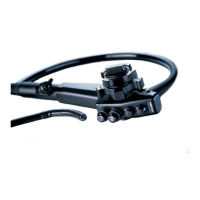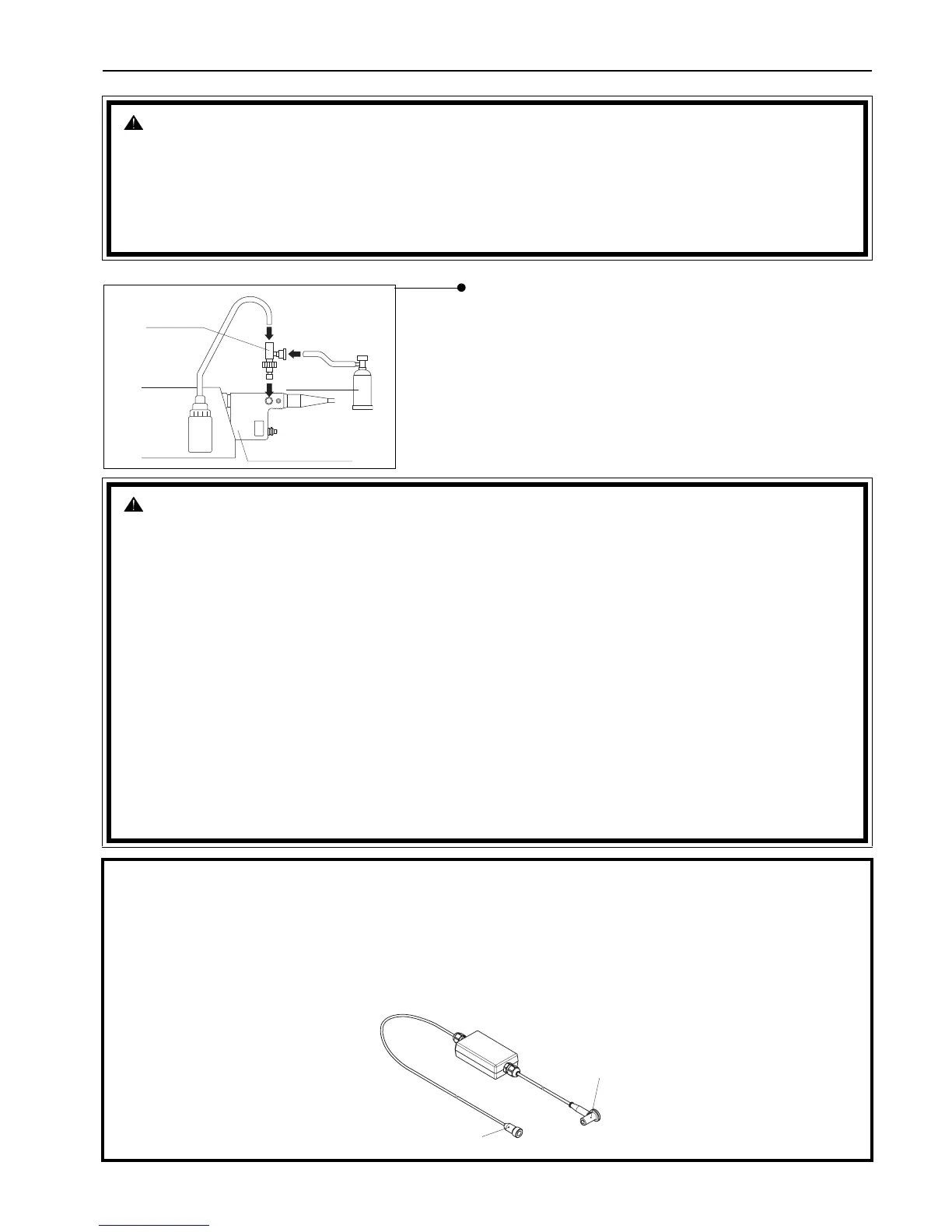- 20 -
3-5. ELECTRO-SURGERY
1) The user has the option of using a non-explosive gas
for insufflation. Non-explosive gas from a pressure-
regulated and flow-rate controlled source can be con-
nected to the provided or optionally available gas
adapter, Model OF-G11, as described for Laser in sec-
tion 3-4.
2) The electrosurgical accessories should be introduced
through the endoscope in the same manner as
described for biopsy forceps in section 3-3.
WARNING:
Please refer to the operating manual provided with the electrosurgical unit. Electrosurgical systems may
be of the floating type (BF type, CF-type) or non-floating (B type). To avoid patient and user burn, use
only the floating type ESU (such as ERBOTOM ICC 200) /accessory systems. Do not use the non-float-
ing (B type) electrosurgical systems. The electrosurgical generator and any electrosurgical accessory
should be carefully and thoroughly inspected. Only the user can determine if the condition of the electro-
surgical generator and the electro-surgical accessory are suitable.
WARNING:
To avoid patient and user burn, follow the instruction below before electrosurgical energy is delivered.
1) Use only the electrosurgical generator with the floating grounding type (BF or CF Type). Do not use
the non-floating (B type) electrosurgical systems.
2) Wear rubber gloves and face masks.
3) The position of the target area, the insulated distal portion of the electrosurgical accessory and the
active portion of the electrosurgical accessory, should be visible.
4) The active portion of the electrosurgical accessory should not touch the surrounding tissue directly or
via fluids.
5) The head of any lesion such as polyp should not touch the surrounding tissue directly or via fluids.
6) Physicians and assisting personnel should avoid contact with the patient while high frequency
energy is delivered.
7) Electro-surgical energy should be delivered for as short a time period as necessary to accomplish
the desired clinical effect.
8) Select a high frequency output power setting suitable for the particular intended procedure in order to
avoid thermal invasion of the tissue or insufficient coagulation resulting in excessive bleeding.
9) To avoid the risk of thermal injury, use only insulated accessories.
Never use non-insulated devices while performing endoscopic electrosurgical procedures.
CAUTION:
It should be recognized that the use of electro-surgical accessory devices employing high frequency cur-
rent may interfere with the normal endoscopic image and this interference is not indicative of a malfunc-
tion of the video endoscope system. PENTAX has developed an earth cable, model OL-Z3 intended to
reduce potential RF interference and electronic noise that may appear in the endoscope image when
using electro-surgical devices. Ensure to always correctly connect cable OL-Z3 between the endoscope
and video processor as described in the instructions provided with the OL-Z3
to endoscope
to video processor

